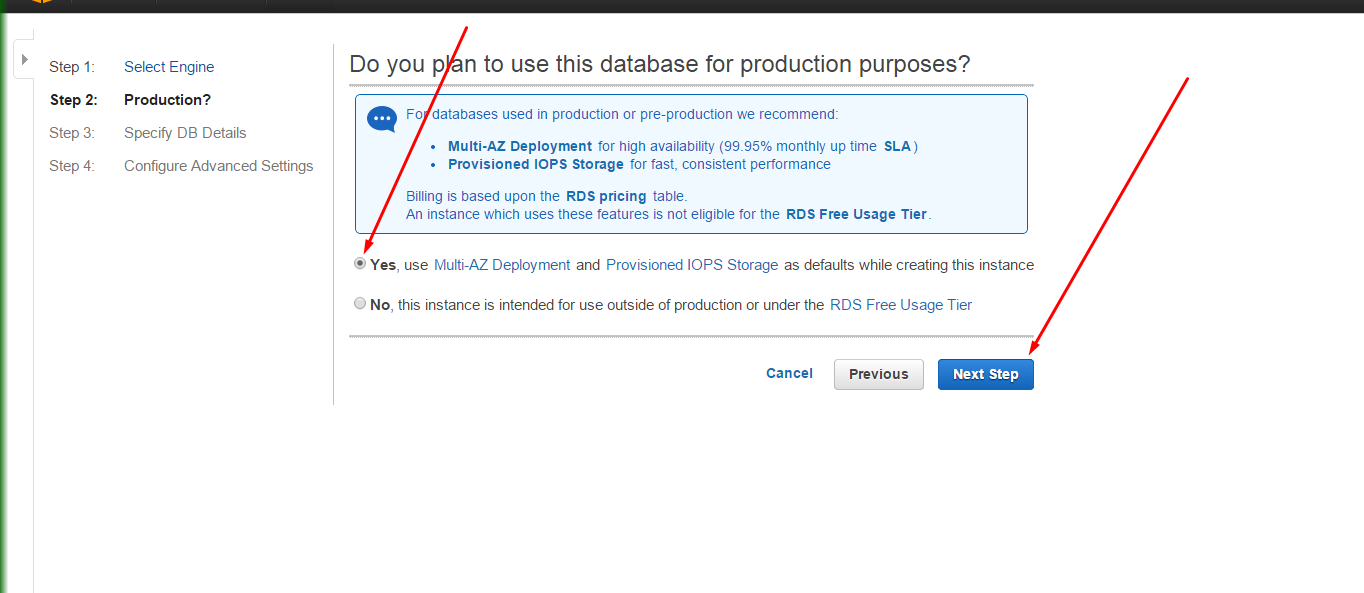1. Click on the RDS on your AWS Console
2. Next go to subnet Groups under RDS Dashboard
3. You Will need to create the DB Subnet group which would be used by RDS to launch the DB instances in AWS
4. You need to provide the DB subnet group , Description, VPC ID, Availability zone and subnet ID. You only need to enter the private subnet since there is no need of creating a public subnet as there is no need for DB to be publicly accessible and keeping DB under private subnet increases the security and helps reducing unauthorized access over internet
5. Next we will launch the DB instance under the RDS Dashboard.
6. Select the type of the Database you want to install
7. Next you need to select if you want to use the DB with the multi AZ Deployment and the Provisioned IOPS Storage as default. This helps in creating the master slave configuration and increases the availability of the DB and best suited for production environments. Also in case your DB instance fails, or needs to be rebooted or some problem occurs due to which your master instance becomes unavailable than it will automatically fail-over to the slave with all the replication set by the Amazon itself making your instances available in multiple AZ in a Region thus guaranting you the maximum availability of the DB uptime.
8. Next you need to select the mysql version , size of the mysql instance you want to launch and authentication and identifier information.
9. Next you need to select the VPC details under which you want to launch the DB instance along with the Database options.
10. Next you need to define how many days backup you want to keep, here it is important to note using innodb you must be able to retrieve the transaction based last available state. So depending on your requirement you need to select how many days old backup you want to keep. Also you can select the maintenance time , this would be the time when amazon would be patching your DB whenever the patches are available. In case you select the multi AZ deployment there shouldn’t be any downtime since DB failover would occur. But as a precaution it is always better to patch the system during the off hours which you can specify here. You may change this later as per your requirement also. In our case we are only trying so we had set no preference here though its good practice to set maintenance window especially for production environment. click Launch DB instance to launch your DB instance.
11. Once configured you should see the DB details as follows. Use the Endpoint URL to connect to your DB instance



















0 comments:
Post a Comment